
In 1912, SP/S 3157’s 7000-mile journey to India began at Liverpool Docks. At the time, getting a complete locomotive onto a sailing vessel would not have been possible, so engineers would have disassembled the locomotive into several parts, allowing for easier loading onto the sailing vessel, and once it had arrived at the destination port it would have been offloaded and reassembled.
It was not until the 1920s that an enterprising Norwegian Navy Captain, Christen Smith, who was experienced in the lifting of heavy equipment realised that there was an opportunity to provide a service to transport the increasing numbers of locomotives being built for foreign railway companies in a complete state, rather than having to disassemble them and then re-assemble at the destination port.


There is very little information about the service career of SP/S 3157 once it reached its destination, outside of the kind of country and people the engine encountered as it travelled through northwest India. However, we are fortunate that during its career the engine underwent a boiler change in 1931 and following every service, from 1953 onwards, the distance it travelled was stamped on a plate fixed to the boiler. By 31 May 1980 it had travelled a total of 2,450,476 kilometres (approximately 1,522,655 miles).
It was in 1979 that the idea of obtaining an example of a 4-4-0 passenger steam locomotive built by a Manchester company began to form here. The museum, which was originally situated in another building in Manchester, was offered the opportunity to develop a new museum of science and industry on the site of the old 1830 railway terminus. Dr Richard Hills, the director of the museum at the time, had a lot of space to fill, and was therefore able to accommodate such a large object to tell the story of Manchester’s contribution to the development of railways.
With the help of the British Overseas Railways Historical Society, Dr Hills set about acquiring a suitable example of the 4-4-0 tender locomotive by Nasmyth, Wilson & Co, which ran on the North-Western Railway of India.
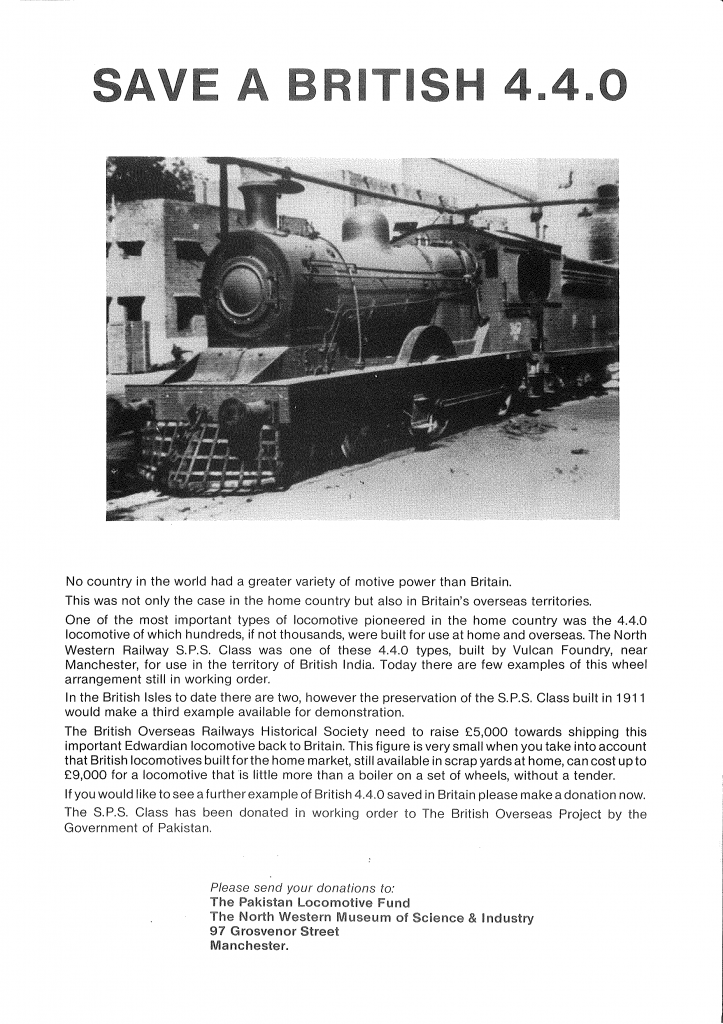
However, this did not go to plan, and it was not until 18 May 1981 that Dr Hills finally received confirmation from the Ambassador of Pakistan that his government had decided to donate SP/S 3157, built by the Vulcan Foundry, as a gesture of goodwill and friendship towards the people and government of Britain from Pakistan. SP/S 3157 had only just finished its working life and was in working order. In 1981, an intrepid pair of Englishmen were exploring Pakistan’s railway system for any steam locomotives still left. They were fortunate enough to see the locomotive at the works and another locomotive of the same class, both in steam.
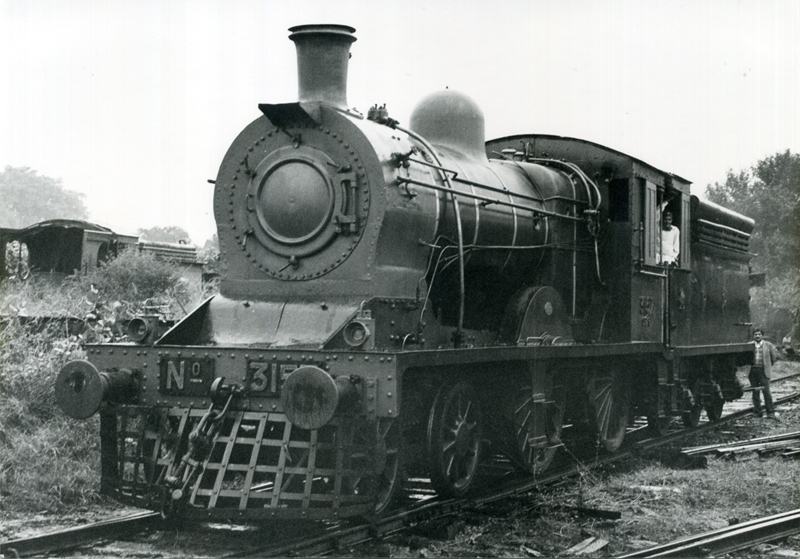

The news left Dr Hills with little time to arrange shipment of the locomotive back to Manchester in time for an important event. The original idea had been to use a ship that was able to travel up the Manchester Ship Canal to the Docks in Manchester; however, because of the delay in getting the locomotive, the only ship that would fit through the locks was no longer available. After some more discussions with other shipping companies, the Pakistan National Shipping Corporation agreed to transport the locomotive back to Liverpool Docks, for no charge, on board the MV Makran, which set sail on 6 April 1982. As the MV Makran made its way to Liverpool, Dr Hills had to organise the discharging of SP/S 3157 at the docks and after some further contacting of people and organisations, SP/S 3157 was almost home.
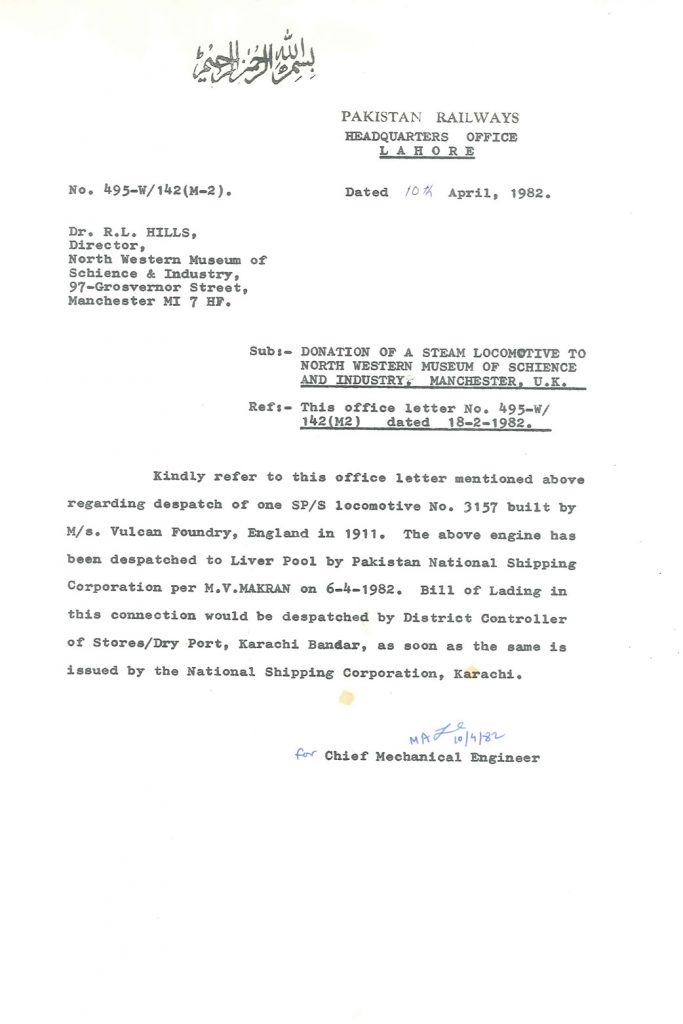
A giant floating crane called the ‘Mammoth’ was to be there to offload the steam locomotive and its tender once it had arrived. SP/S 3157’s own mammoth journey was eventually completed on 26 April 1982, 70 years after it had originally left for India, back in time for the Royal Visit for the opening of the new museum site on the 5 May 1982.
Above: Offloading of engine and tender at Liverpool Docks by the ‘Mammoth’ floating crane

Want to know more about the Vulcan? Read part one of this blog to find out about the production of the locomotive.
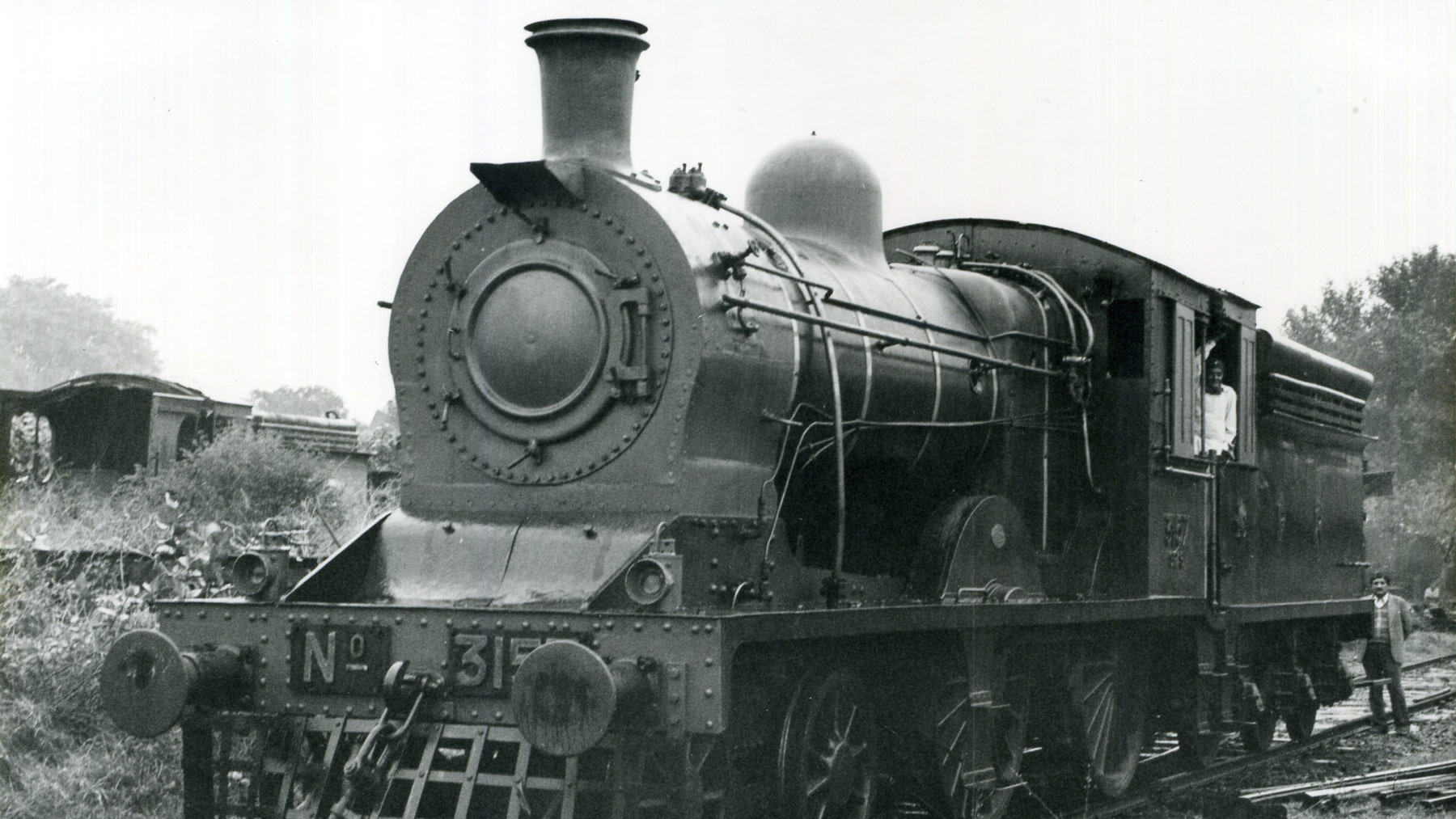



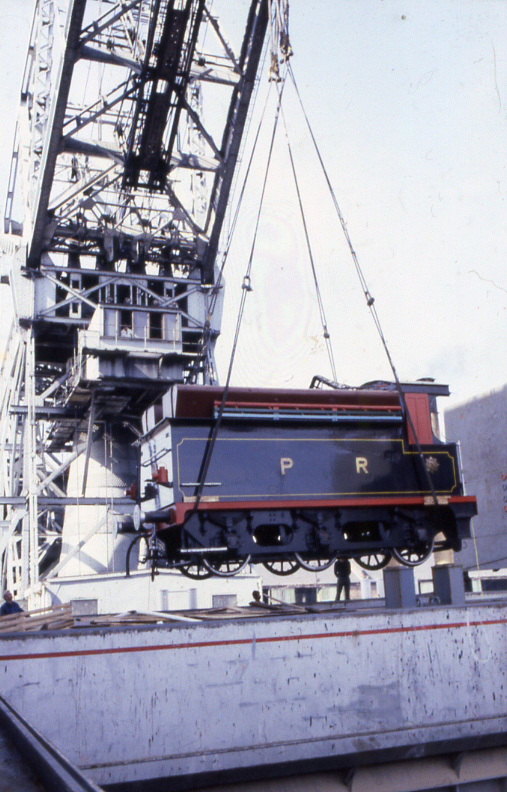

As the founder and first chairman of the British Overseas Railways Historical Trust, I was directly responsible with Dr Richard Hills, for the negotiations to repatriate S P S class locomotive 3157 from Pakistan.
It was my idea to try and obtain this interesting and important locomotive for preservation, the original plan being that it would be the first of several Manchester constructed machines to be brought home to represent Manchester’s contribution to world export locomotives and rolling stock.
It was quite a day when 3157 arrived home and I was there to see it craned off the ship in Liverpool.
I will never forget going down into the hold of the ship and seeing this beautiful 4-4-0 for the first time, quite an experience, all worth the effort and hard work.